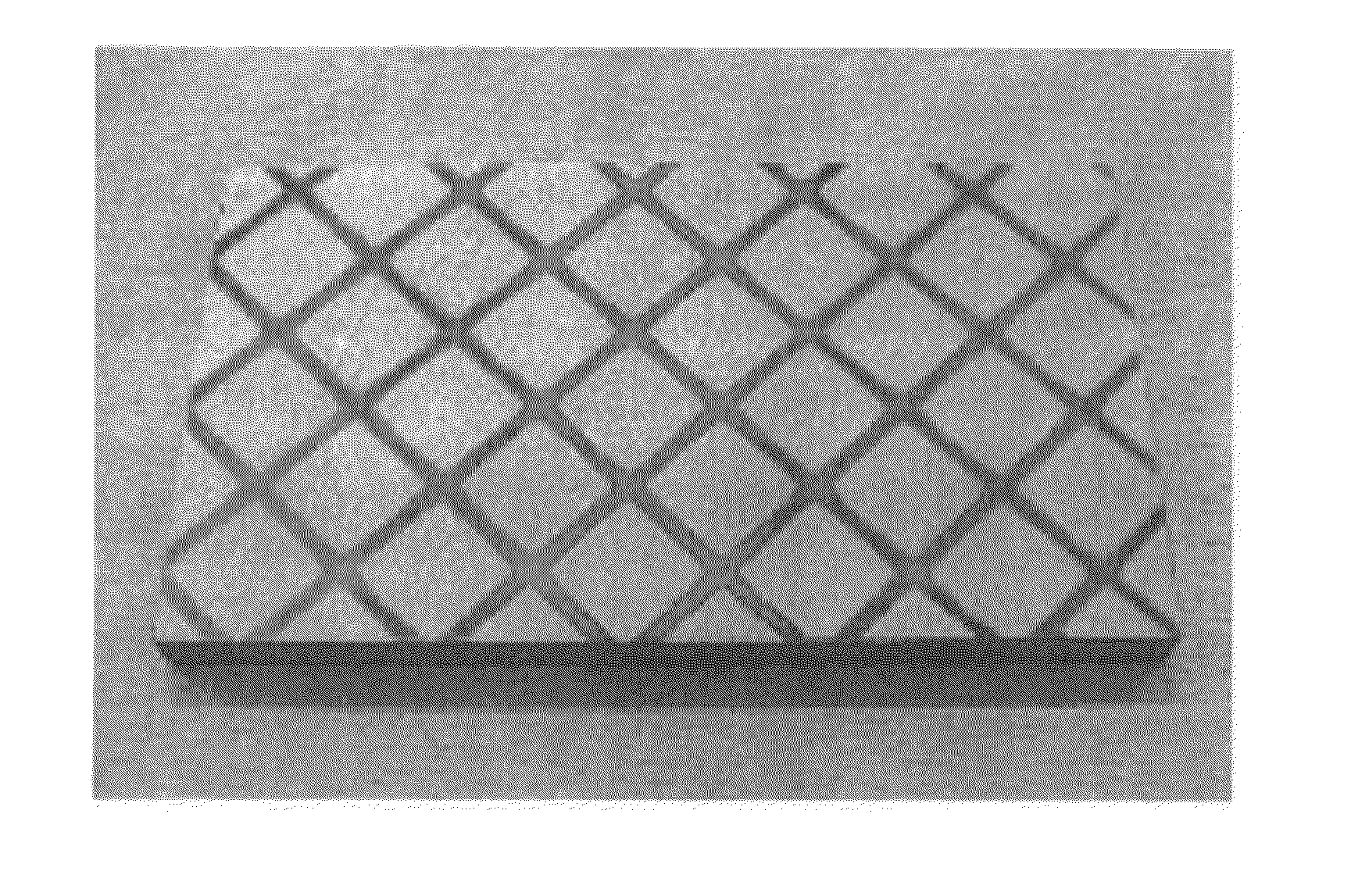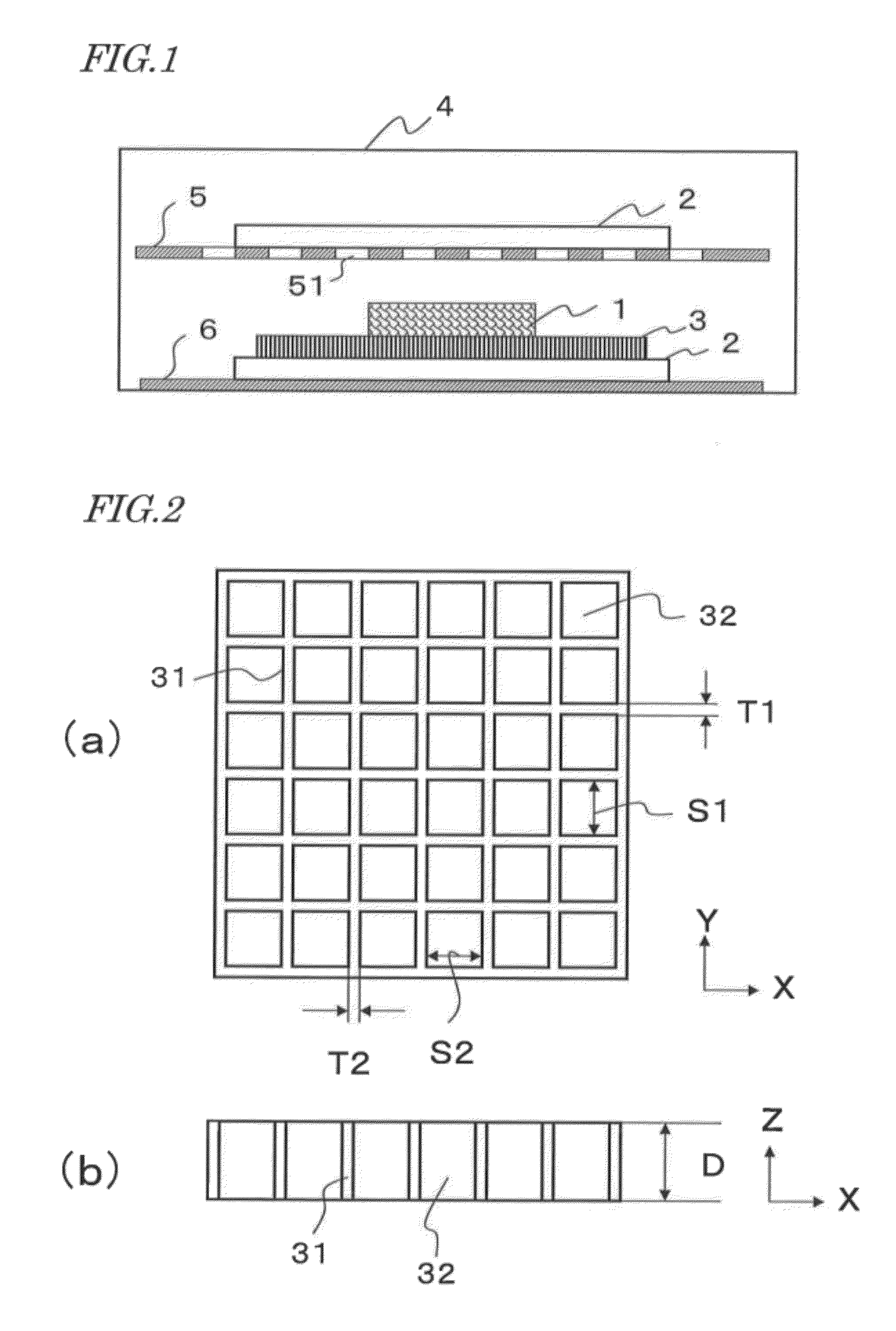PROCESS FOR PRODUCTION OF R-Fe-B-BASED RARE EARTH SINTERED MAGNET, AND STEAM CONTROL MEMBER
- Summary
- Abstract
- Description
- Claims
- Application Information
AI Technical Summary
Benefits of technology
Problems solved by technology
Method used
Image
Examples
embodiments
Material Alloy
[0086]First, an alloy including 25 mass % to 40 mass % of a light rare-earth element RL, 0.6 mass % to 1.6 mass % of B (boron) and Fe and inevitably contained impurities as the balance is provided. A portion of B may be replaced with C (carbon) and a portion (50 at % or less) of Fe may be replaced with another transition metal element such as Co or Ni. For various purposes, this alloy may contain about 0.01 mass % to about 1.0 mass % of at least one additive element M that is selected from the group consisting of Al, Si, Ti, V, Cr, Mn, Ni, Cu, Zn, Ga, Zr, Nb, Mo, Ag, In, Sn, Hf, Ta, W, Pb and Bi. The alloy may also include a heavy rare-earth element RH.
[0087]Such an alloy is preferably made by quenching a melt of a material alloy by strip casting process, for example. Hereinafter, a method of making a rapidly solidified alloy by strip casting process will be described.
[0088]First, a material alloy with the composition described above is melted by an induction heating p...
example 1
[0105]An alloy was prepared by strip casting process so as to have a composition consisting of 23.3 mass % of Nd, 6.0 mass % of Pr, 2.5 mass % of Dy, 0.99 mass % of B, 0.92 mass % of Co, 0.1 mass % of Cu, 0.24 mass % of Al and Fe as the balance, thereby making thin alloy flakes with thicknesses of 0.2 mm to 0.3 mm.
[0106]Next, a container was loaded with those thin alloy flakes and then introduced into a hydrogen pulverizer, which was filled with a hydrogen gas atmosphere at a pressure of 500 kPa. In this manner, hydrogen was occluded into the thin alloy flakes at room temperature and then partially released by heating the alloy flakes to 500° C. in a vacuum. By performing such a hydrogen process, the thin alloy flakes were decrepitated to obtain a powder with sizes of about 0.15 mm to about 0.5 mm.
[0107]Thereafter, 0.05 wt % of zinc stearate was added as a pulverization aid to the coarsely pulverized powder obtained by the hydrogen process and then the mixture was pulverized with a ...
example 2
[0121]Next, the influence of the D / A ratio (where A represents the area of each opening 32 and D represents the depth of the opening 32) on magnetic properties will be described. The following Table 1 shows specific example of the present invention and comparative examples, of which the vapor control members were made of mutually different materials and had respectively different shape parameters such as the thicknesses T1 and T2. In each of these specific examples of the present invention and comparative examples, its sintered magnet body was made and subjected to the diffusion process under the same conditions as in Example 1 described above, except that the vapor control member was modified as shown in the following Table 1:
TABLE 1heavy rare-MaterialLocalearth element of vaporDepthAreadecreaseRH introductioncontrol ThicknessThicknessDAD / Ain surfaceefficiencyDeformed?NomemberT1 (mm)T2 (mm)(mm)(mm2)(mm−1)flux density*(%)*****1Examplecordierite0.50.551.962.55◯◯◯2Example(2MgO•0.50.51...
PUM
| Property | Measurement | Unit |
|---|---|---|
| Temperature | aaaaa | aaaaa |
| Temperature | aaaaa | aaaaa |
| Length | aaaaa | aaaaa |
Abstract
Description
Claims
Application Information
 Login to View More
Login to View More - R&D
- Intellectual Property
- Life Sciences
- Materials
- Tech Scout
- Unparalleled Data Quality
- Higher Quality Content
- 60% Fewer Hallucinations
Browse by: Latest US Patents, China's latest patents, Technical Efficacy Thesaurus, Application Domain, Technology Topic, Popular Technical Reports.
© 2025 PatSnap. All rights reserved.Legal|Privacy policy|Modern Slavery Act Transparency Statement|Sitemap|About US| Contact US: help@patsnap.com



